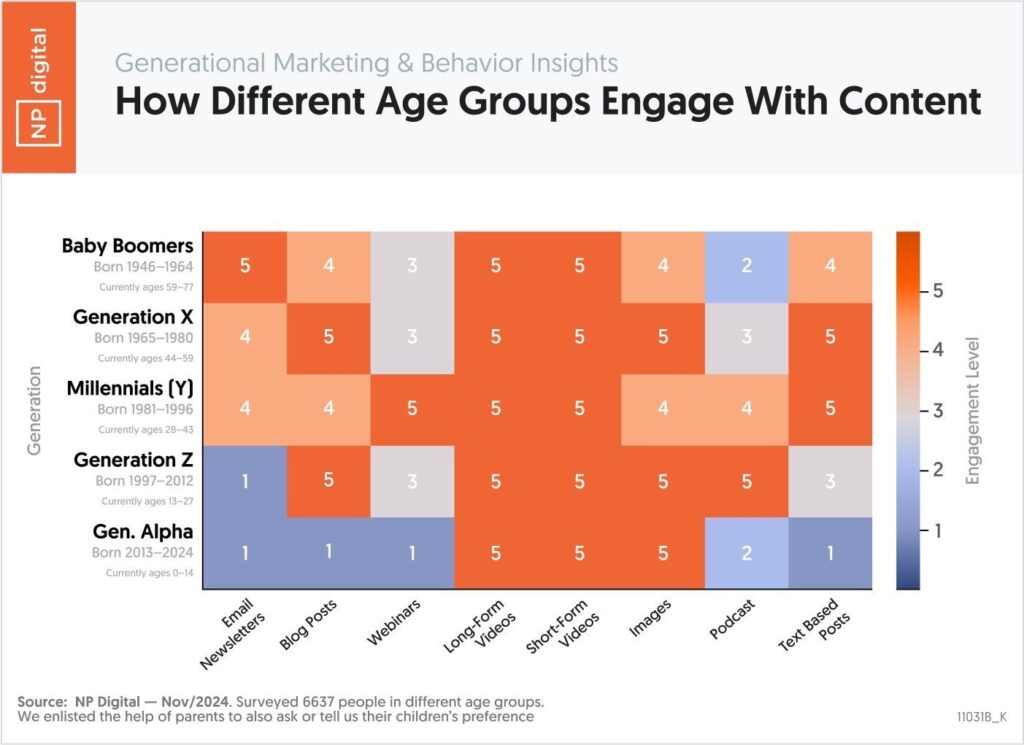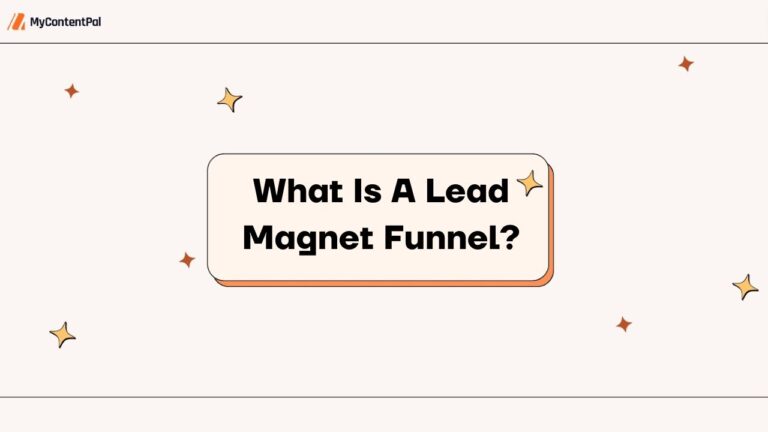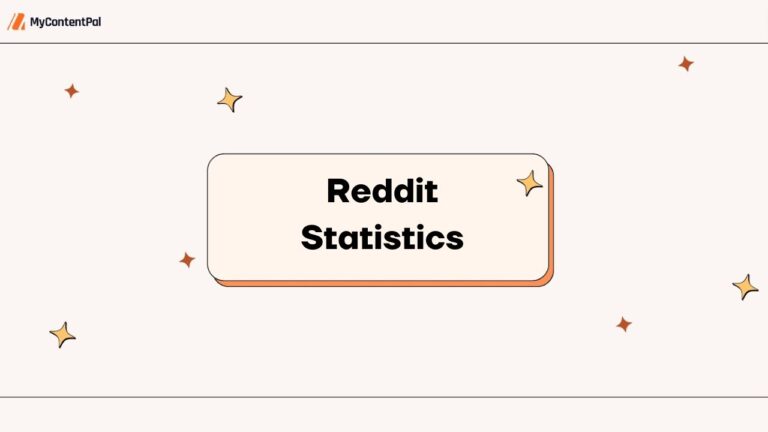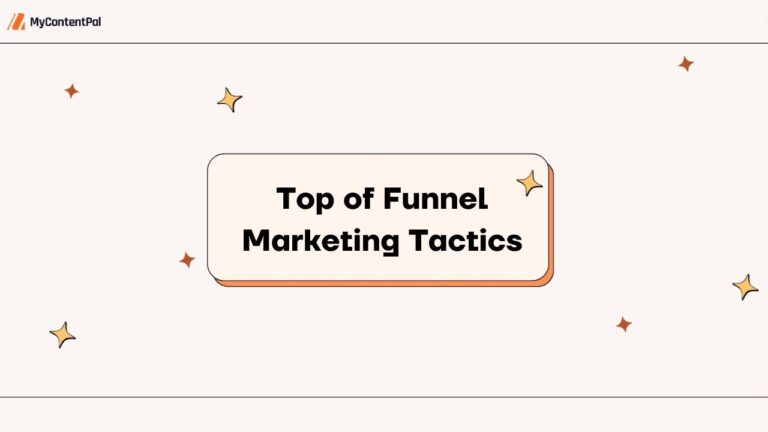Here’s a fact to grab your attention: Companies with structured content see 67% more leads than those without. Surprising? It’s not a lucky guess—it’s a strategic move.
In the world of B2B content marketing, creating cohesive, easy-to-follow content can be a challenge. That’s where content pillars come in. They’re the backbone of your content marketing strategy.
With content pillars, you build a one-stop shop of topically focused, expert content that tells Google your brand knows its stuff.
Every piece you add boosts your authority, helps you rank higher, and positions you as the go-to in your industry. Sound like something you want? Let’s break it down.
What Are Content Pillars?

“Imagine this cascading waterfall. The pillar piece of content is the source of the waterfall, and the subsequent content pieces are the streams that branch out of it.” — Matt Gray, Founder & CEO of Founder OS.
Content pillars are your core topics—the foundation for all content creation. Think of them as the trunk of a tree, with blog posts, videos, case studies, and other related content acting as the branches and leaves.
For example, a pillar topic would be “SEO Basics,” and can include supporting content such as:
- How to do keyword research for SEO
- What is on-page SEO
- Master off-page SEO
- What is technical SEO
By linking everything back to the pillar, you create an interconnected web of topically relevant content that demonstrates to Google that you are an expert in your field. The results?
1. Topical relevance and topical authority
Google rewards experts. To rank high, you need to be seen as an authority. Pillar-cluster content builds topical relevance and topical authority, so the more interconnected, high-quality information you provide, the more Google will see you as an expert in your niche.
2. Knowledge-Based Trust (KBT)
Google uses Knowledge-Based Trust (KBT) to determine if your site deserves a top spot. This isn’t just about cramming in keywords—it’s about showing depth, accuracy, and comprehensive topic coverage. Through content pillars, your brand develops that KBT with Google, building a reputation for knowledge, consistency, and reliability.
Why B2B Companies Thrive with Content Pillars

Why does pillar content work so well in B2B? Because it’s designed to solve real problems. Here’s why B2B brands can’t ignore it:
- Simplifies complex topics: B2B topics can get very technical. Pillars break down these complex ideas into digestible chunks. Your clients get clarity, not confusion, and your brand earns their trust.
- Supercharges lead generation: Content pillars attract and nurture the right audience. When clients find cohesive, well-organized content, they’re more likely to see you as the go-to source for information. And the longer they stick around, the closer they get to conversion.
- Positions you as an industry authority: When you dive deep into key topics, you’re no longer just another brand. You’re the go-to source. Content pillars help you stand out by proving your expertise.
- Boosts SEO, and puts you on the map: By interlinking all your content, you show Google your site’s topical relevance. This structure helps Google Bot find, crawl, and index more pages, giving you a better shot at ranking higher.
Types of Pillar Content for B2B Brands
Not all content is created equal. To make a real impact, you need a mix of content formats that engage, educate, and convert. Here are the five powerhouse types of pillar content.
1. Promotional content
Your audience wants to know what you offer—but they don’t want a sales pitch. The Content Marketing Insitute says that 73% of B2B buyers say case studies influence their purchasing decisions. Promotional content highlights services in a way that solves their problems. Share client success stories, product demos, or case studies.
2. Educational content
B2B buyers crave knowledge. In fact, 80% of B2B buyers prefer brands that provide useful content over flashy ads. With educational content, you do just that—inform and educate! This can be done by creating guides, tutorials, and explainer articles that answer pressing questions that help solve problems for users in a given niche.
3. Inspirational content: Motivate action
B2B doesn’t have to be boring. Inspirational content humanizes brands and connects them with their audience on an emotional level. This can be done by sharing stories of industry innovation, leadership breakthroughs, or challenges overcome.
4. Engaging content: Spark conversations
The best content doesn’t just inform—it starts a dialogue. When your content encourages conversation, it drives up audience interaction and keeps them coming back for more. In fact, content that encourages interaction can drive 94% more engagement than static formats.
To engage your audience on your website, create content that invites questions, comments, or feedback. For example, add a CTA like:
“What’s your biggest challenge with SEO? Let us know in the comments!”
Or ask a thought-provoking question that ties into your pillar topic:
“What strategies have you found most effective for SEO? Share your experience below!”
Engaging pillar content turns passive readers into active participants, making them feel heard and valued. So make sure your pillar content encourages interaction and keeps the conversation going!
Aligning Content Pillars with the B2B Marketing Funnel

To truly maximize the impact of your content pillars, you need to align them with the stages of the B2B marketing funnel. The idea is to create a broad pillar page that addresses a core topic, and then cluster more detailed content around it to guide users through their journey.
Top of Funnel (TOFU): Capture attention
At the top of the funnel, your pillar page serves as a broad introduction to a topic, like “SEO Basics.” The pillar page provides valuable, easy-to-digest information that addresses the problem and introduces potential solutions, but it doesn’t go into too much depth—yet.
Middle of Funnel (MOFU): Engage and nurture
Once a user moves past the initial awareness stage (TOFU), they enter the middle of the funnel (MOFU), where they are actively evaluating solutions.
At this stage, your cluster content becomes essential. It should address more detailed, solution-oriented queries that help the prospect evaluate their options. For example, someone reading about SEO tools may now be interested in understanding which specific tools would work best for their business.
Bottom of Funnel (BOFU): Close the deal
At the bottom of the funnel (BOFU), prospects are ready to decide. Here, your content should be highly specific and geared toward conversion. For example, a product demo or a customer testimonial page linked from your pillar content can seal the deal, showing users exactly how your solution solves their problems.
Linking back to relevant MOFU and TOFU content also helps create a cohesive journey that leads seamlessly to conversion!
How To Build A Content Pillar Strategy for Your B2B Brand

How do you identify and build the right pillars? Let’s break it down into 10 steps.
Step 1: Understand who you are speaking to
The key to creating killer content? Understanding your audience. Are you speaking to SEO managers, CMOs, or other professionals in your niche? You need to know their pain points. What challenges are they facing? What solutions are they actively searching for?
Where to look:
- Keyword research will help you identify what people are searching.
- Google Trends and Answer the Public help you spot trending questions.
- Social platforms like LinkedIn and X let you see what industry leaders are talking about.
- Reddit and Quora are goldmines for discovering common questions.
Pinpoint your audience’s problems, and you’ll attract the right leads who are primed for conversion.
Step 2: Identify how different age groups engage with content
Who you’re trying to reach? Millenials? Or Baby Boomers? Tweak the content format to really click with your audience. According to SEO expert Neil Patel, these are the content formats each age group prefers.

Step 3: Understand what’s working (and where can you stand out)
What are your competitors doing well? And, more importantly, where can you outshine them? Dive into your competitors’ content strategies. Find out which topics are the most popular and resonate with their audience. Are there any gaps you can fill?
Tools to use:
- Semrush helps you analyze competitor keywords, backlinks, and content structure.
- LowFruits highlights keywords where forums or weaker sites rank on the SERP.
Step 4: Align pillars with your business objectives

What’s your goal with this content? Is it lead generation, brand awareness, or customer retention? Whatever your business objectives are, each content pillar should work towards them. For example, if brand awareness is your focus, create educational, high-value informative content.
Step 4: Structure your pillar content
Think of your pillar page as the ultimate guide—it introduces key subtopics but doesn’t go into too much detail. Why? Because the real depth lives in the cluster pages, which are designed to answer specific questions or dive deeper into individual subtopics.
For example, if your pillar page is about SEO Basics, it will briefly touch on key subtopics like on-page SEO, off-page SEO, technical SEO, and keyword research. Each of these will link to a dedicated cluster page, offering a more detailed breakdown.
The goal is to create a seamless journey for your audience. Your pillar page gives them the big picture, and the cluster pages provide the specifics, keeping them engaged and leading them further down the funnel.
Step 5: Create cluster content around each pillar
How can you go deeper into each topic? That’s where cluster content comes in. These pages are your deep dives—focusing on specific subtopics and providing detailed answers your audience is searching for.
Here’s how to structure them:
- Go in-depth: Each cluster page should cover its subtopic thoroughly. If your pillar is “SEO Basics,” a cluster page on “Keyword Research” should detail everything from tools to best practices.
- Link smartly: Every cluster page should link back to the pillar page. This reinforces your topical relevance and creates a clear structure for both your audience and search engines.
- Connect the dots: Don’t stop at linking to the pillar page—link your cluster pages to each other. For example, a page on “Keyword Research” could link to one on “On-Page SEO,” showing how they interrelate.
Where to get ideas:
- Check “Related Searches” at the bottom of Google’s results page for more ideas.
- Keyword research to help you identify what people are searching.
- Dive into your competitor’s content and see which subtopics they’ve missed.
- Use AlsoAsked for niche-specific questions around a main topic, giving you ready-made H2s and H3s to structure your content effectively.
- Use Hypefury to gather new ideas based on user preferences on social media.
Step 5: Plan your content distribution
Content is nothing if it’s not seen. That’s why a solid distribution plan is key—but it doesn’t stop there. Repurpose your pillar and cluster content to reach more people, on more platforms, in more formats.
Here’s how:
- Turn pillar content into bite-sized formats: Break it down into email series, social media posts, or short videos.
- Leverage cluster content: Use detailed subtopics to create tutorials, infographics, or even podcast episodes. Then link back to your website for the full story.
- Always link back: Every email, post, or repurposed format should drive traffic to your pillar or cluster pages. This not only boosts your website visits but also reinforces your authority in the eyes of search engines.
Step 6: Optimize for On-Page SEO

SEO is the engine behind your content’s success. To maximize its impact, go beyond basics like keyword optimization, internal linking, and meta tags.
Implement a semantic content structure that aligns with user intent and makes your pages easier to understand for search engines. Use a logical heading structure to guide readers and emphasize key points, and don’t forget content design—organizing your information to make it clear, accessible, and user-friendly.
Tools to track performance:
- Use Google Analytics, Google Search Console, Semrush, or Ahrefs to track key metrics and performance.
Without SEO optimization, your content might never get found. Optimize, track, and stay visible.
Step 7: Refine based on data and feedback
Is your content driving the results you need? Dive into metrics to find out. Use Google Analytics 4 (GA4) to track:
- Average engagement time: Are people spending enough time on your page?
- Bounce rates: Are visitors leaving too quickly?
- Traffic sources: Where is your audience coming from?
In Google Search Console (GSC), monitor:
- Click-through rates (CTR): Which pages are grabbing attention?
- Top-performing keywords: Are you ranking for the terms you want?
Let data guide your tweaks. Spot underperforming pages, identify high-performing content, and double down on what works. Your metrics are the map to better engagement and more conversions.
Step 8: Stick to your schedule
Consistency keeps your content marketing strategies on track. Set up a content calendar to plan and stay organized. While regular publishing ensures your audience knows when to expect new material, it’s the quality of your content—its relevance, expertise, and ability to connect with your audience—that truly builds authority.
Pair consistency with impactful, well-crafted content to keep your brand top of mind and trusted in your niche.
Powerful B2B Content Marketing: Real-Life Example of Effective Content Pillars

Wondering how top B2B brands use content pillars to fuel growth? Let’s look at HubSpot—the gold standard in using content pillars for B2B success.
HubSpot: Six Reasons Why It’s a Content Marketing Powerhouse

- HubSpot’s content revolves around core topics like inbound marketing, sales, and CRM. These topics align with their business and audience needs.
- HubSpot’s blog posts, eBooks, webinars, and case studies dive into the details, offering real value. Plus, they link related content across their site, keeping visitors exploring and engaged longer.
- HubSpot is consistent. They post regularly across multiple channels, earning their reputation as a trusted authority.
- HubSpot optimizes its pillar pages for broad, short-tail keywords to capture a wide audience. Their cluster pages, however, dive deeper, targeting more specific long-tail keywords to attract targeted traffic. Each post also has strategic CTAs, leading prospects down the path to conversion.
- HubSpot’s content isn’t just about educating—it’s strategically designed to guide people down the sales funnel. While they focus on providing valuable insights and solutions, they also incorporate internal links to their product pages, gently pushing their audience closer to conversion without overt sales pitches.
- HubSpot uses content to generate leads by offering educational and informational resources. Their goal is to attract people through valuable content, encouraging sign-ups for newsletters and other lead-capturing opportunities. By building trust through resources like blog posts, social media engagement, and HubSpot Academy, they nurture these leads into lasting relationships.
The Top 3 Challenges in B2B Content Pillar Strategy
Implementing a solid content pillar strategy isn’t without hurdles. I found the three most common challenges B2B brands face.
1. Maintaining consistent, high-quality content
It’s tough to produce top-notch content consistently—I hear you. Different team members and tasks can cause delays. The solution? Plan ahead. Build a content calendar with deadlines and clear roles. Stick to quality checks to ensure every piece shines before publishing.
2. Staying relevant
Industries change—so you probably always feel the burden of keeping up. You are not alone. But outdated content makes your brand look behind the times. So keep your content fresh! Update pillar pages regularly with new stats and insights. Stay ahead by offering current, relevant info that positions your brand as an industry leader.
3. Measuring success and adapting
Without clear metrics, it’s hard to know if your strategy is working. Set clear KPIs like organic traffic, time on page, and conversions. Regularly assess your performance and be ready to pivot if needed. If a pillar isn’t performing well, refine it.
Create a B2B Content Pillar Strategy with My Content Pal
Picture a content strategy tailored just for your brand—one that captures leads, boosts rankings, and makes you unforgettable.
If that’s something you like, schedule a strategy call with me, Craig Dewart—founder of My Content Pal. I am eager to talk about how our custom content pillar strategy can fit into your goals!
FAQs
What are the examples of B2B content pillars?
B2B content pillars focus on big-picture topics that resonate with target audiences in business contexts. Content pillar examples include:
- Industry insights and trends;
- How-to guides and best practices;
- Case studies and success stories;
- Product tutorials and educational content;
What are the pillars of B2B marketing?
The main pillars of B2B marketing focus on areas that drive growth, engagement, and conversions for businesses. They include:
- Content marketing: Create valuable content that positions your brand as a thought leader and addresses key industry challenges.
- SEO and search marketing: Optimize content to increase visibility in search engines, ensuring your target audience finds you when they need solutions.
- Lead generation: Attract and capture leads through strategic landing pages, gated content, and email marketing campaigns.
- Relationship building: Build trust with your audience through personalized communication, targeted content, and consistent engagement to foster long-term loyalty.
What are the 4 C’s of B2B?
The 4 C’s of B2B marketing focus on delivering value in ways that resonate with business customers. They are:
- Customer needs and wants: Identify and address the specific needs, pain points, and goals of your target B2B audience.
- Cost to satisfy: Rather than price alone, emphasize the total cost of ownership, including long-term value and ROI.
- Convenience: Make it easy for clients to access your solutions, from efficient customer service to streamlined purchasing processes.
- Communication: Focus on open, two-way communication to build trust, clarify expectations, and provide ongoing support.
Wrap Up: Stay Agile, Stay Ahead
Content pillars are the perfect framework for building trust. They create a cohesive, authoritative site that ranks high on Google and delivers real value to your clients.
So don’t let your content get lost in the shuffle. Our content writing agency can help you dominate your niche. Our keyword research team finds the right opportunities. Our dedicated writers maintain a steady flow of high-quality content, and our content editing team ensures everything is polished, professional, and on point.





